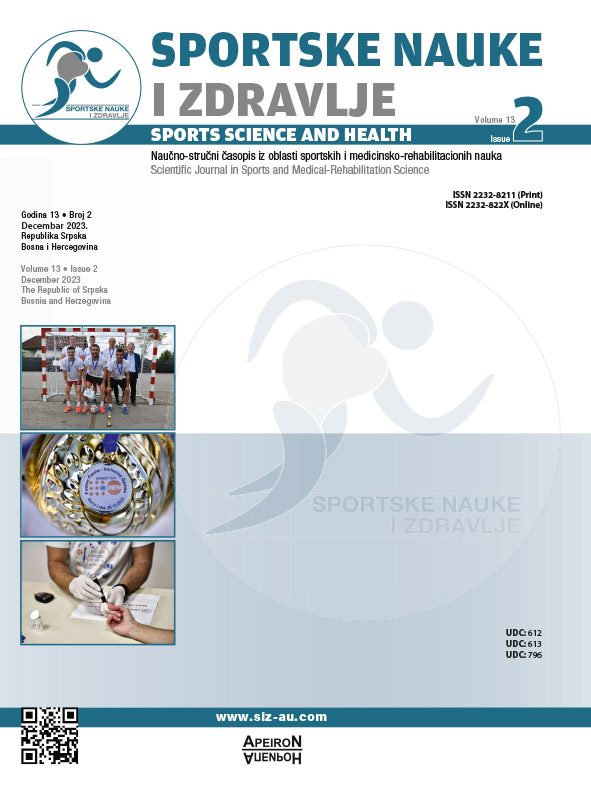Quality of Life and Physical Conditioning in Women
DOI:
https://doi.org/10.7251/SSH2302174MAbstract
The aim of this study was to determine the differences in the level of quality of life and physical conditioning between women who are engaged in some form of recreational exercise and women who do not have organized physical exercise. The study involved 60 women of 25 to 45 years old divided into a group engaged in recreational exercise at least a year (30) and a group of non-exercisers (30). A quality of life questionnaire was used to examine the attitudes about the level of quality of life, while a battery of diagnostic tests in the level of physical fitness was assessed. T-test for independent samples was used to compare the two groups. The results showed statistically significant differences in favor of exercisers when it comes to the expression of overall quality of life, as well as the dimensions of mental and physical health and environmental impact. Observing physical performance, women who actively exercise showed a higher degree of physical fitness compared to physically inactive respondents. Therefore, it can be concluded that physical activity has a positive effect on improving quality of life and physical conditioning in women who are engaged in some form of recreational activity.
